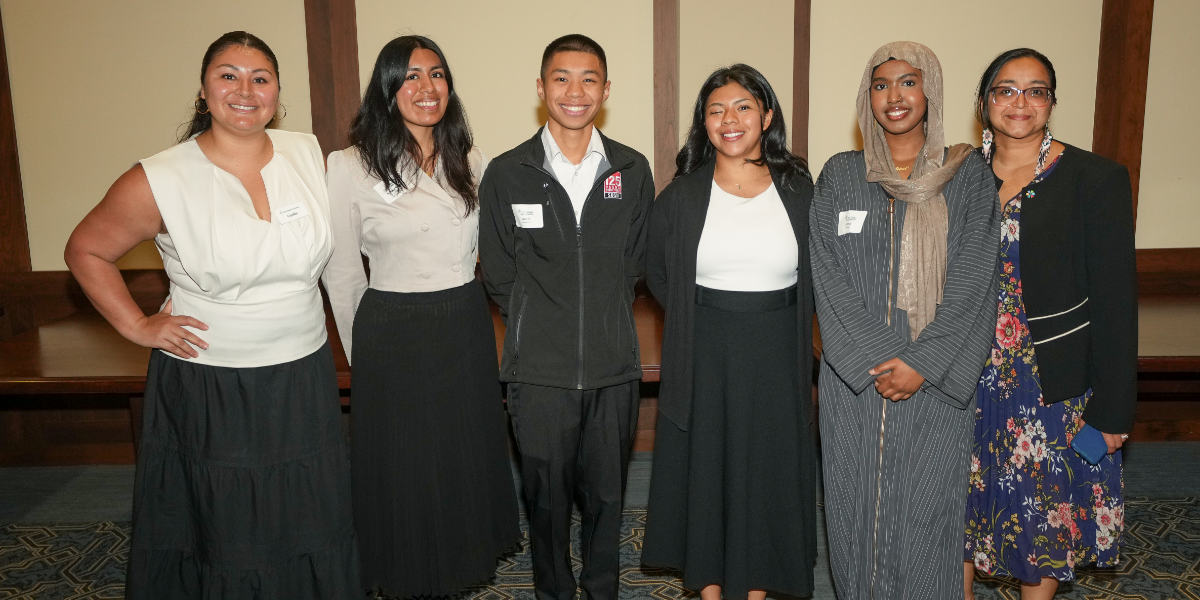In our first and second installments of the ‘True Cost of College’ series, we looked at how housing and lack of preparation can keep a student from the finish line – graduation day. Our series continues with an article that breaks down how books, fees and campus hunger prevent our aspiring graduates from achieving their academic dreams.
Few things are more synonymous with the fall months than the beginning of the school year. In past weeks, our region’s former high school seniors have stepped onto their college campuses for the first time to launch into their college careers. These young people are full of hope and likewise, some apprehension. And with good reason. Obtaining a college degree has never been an easy endeavor, but it is arguably harder today than ever.
[pullquote]Today, full-time undergraduates can expect to spend as much as $1,400 on books and supplies each year they are in school.[/pullquote]Successfully navigating the college experience includes learning how to manage finances and live by a student budget that considers the total cost of attendance (COA). This is more than the bill you may get from your college; COA is the total estimated amount it will cost a student to go to college each year, including tuition and fees; housing (on campus or off) books, supplies, transportation, loan fees, and, if applicable, care for children or adult dependents.
Some point out that many of these expenses, such as housing and food, are a given for all of us, whether you are in school or not. But, while most working adults are receiving an income to cover living expenses, a student’s work is primarily school. Students forego earnings in order to attend and focus on their studies. Without income, these expenses are even harder to address.
Books
According to analysis from The Economist, we have seen a fifteenfold increase in the average price of textbooks since 1970 – three times the rate of inflation. Today, full-time undergraduates can expect to spend as much as $1,400 on books and supplies each year they are in school.
For low-income families that can be the equivalent of one month’s rent or just under 10% of the household income of a small family living at the federal poverty line.
When a student can manage to piece together the financial resources to cover all their book expenses, it is often not soon enough. Professors often expect textbooks in hand on day-one, but many students don’t get financial aid squared away until well into the semester – making the purchase of a $200 textbook for the start of semester an especially challenging feat.
Fees
[pullquote]In the last 20 years, student fees have grown faster than tuition.[/pullquote]In the last 20 years, student fees have grown faster than tuition in percentage terms. Expenses such as technology fees, library fees and athletic fees rose 95 percent at public four-year colleges (and 61 percent at private colleges).
Finding community and feeling a sense of belonging is of paramount importance to persistence and college completion yet, the way students find and engage in community – clubs and student organizations – are also seeing increasing membership dues.
Campus organizations often charge a minimum of $10-$25 to sign up but other fees associated with an on-campus organizational membership can cost hundreds and thousands of dollars for students such as those looking to enter a sorority or fraternity, making these groups entirely out of reach for many students.
Food
[pullquote] Up to a third of UC and CalState students have reported housing or food insecurity.[/pullquote]Brains need food to work optimally, but food insecurity is on the rise across the nation’s campuses.
Here in California, recent data from the California Student Aid Commission tell us up to a third of University of California- and California State University-system students have reported housing or food insecurity.
According to the San Diego Hunger Coalition that produces a College Hunger Toolkit, persistent college hunger has the power to widen the disparities in academic success and health. In 2016, of the nearly 3.3 million students nationally who were eligible for the Supplemental Nutrition Assistance Program (SNAP), less than half applied. Anthony Abraham Jack, a professor at the Harvard Graduate School of Education, tells a powerful and personal story to point out that “students in need must navigate not only the bureaucratic red tape to apply but also the double bind of the 20-hour workweek requirement — the minimum to receive SNAP benefits, but also the federal work-study maximum — all while staying in good academic standing.”
Student success is a complex and delicate equation of removing barriers and increasing the support that helps aspiring scholars succeed.
Each potential bump, as small as it may be, is a pathway to derailment. Barriers accumulate and can chip away at a student’s resolve, energy and hope for the future.
San Diegans who are interested in supporting the academic achievement and success of our young people, and vitality of our region, are taking note. Generous donors at The San Diego Foundation are coming together to open new scholarship funds and support the Community Scholars Initiative, a scholarship fund that takes a holistic approach to scholarship philanthropy,
We invite you to learn more about how you can help prepare students for a successful college experience by starting your own fund or investing in the Community Scholars Initiative.



